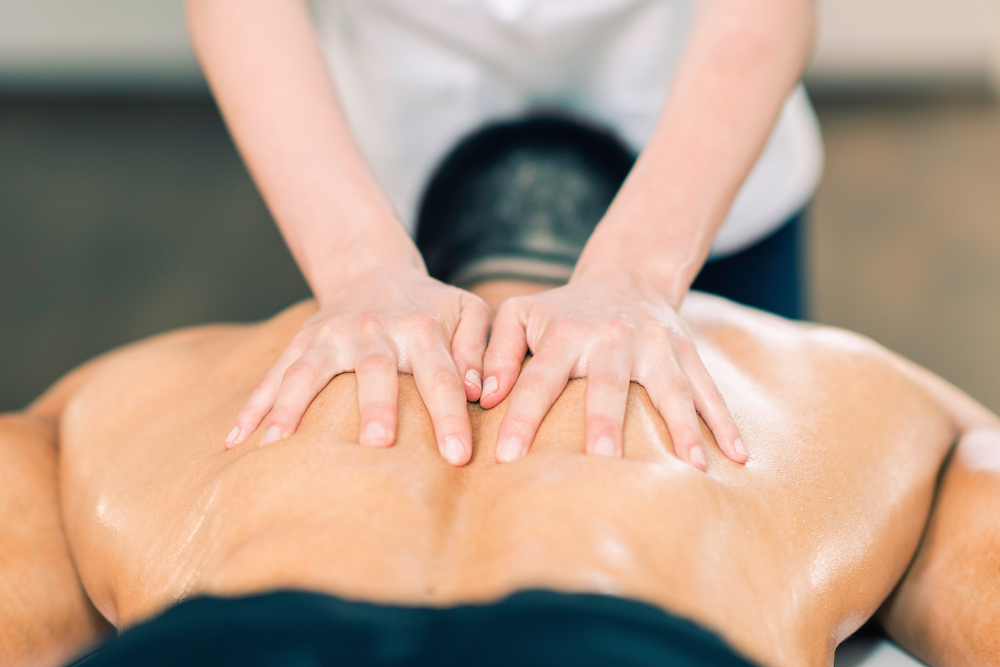The world of massage is not monotone. There are multitudes of massage modalities, several of which we have covered in previous articles. While completing massage therapy training at East West College, our students can take specialized classes in different massage techniques. Today we’re reviewing Lymphatic Drainage Massage. We will provide a basic definition, as well as listing benefits, techniques, and contraindications.
First, let’s review how the lymphatic system works. This portion of the circulatory system has two big jobs: 1. Removing waste and excess fluid, and 2. Fighting off infections. The lymphatic system exists throughout the body, and includes vessels, tissues and organs.
The lymphatic system also assists with venous return. While pumping blood, the heart pushes some liquid out of the capillaries, into areas between tissues, called interstitial spaces. Lymphatic vessels return these liquids to the heart.
Lymph fluid contains fats, proteins, waste, bacteria, and white blood cells called lymphocytes. While moving through the lymphatic system, lymph fluid moves through small clusters of organs called lymph nodes, where infectious agents are removed. Next, the lymph fluid is returned to veins beneath the collarbones, and then to the heart. The spleen, tonsils, adenoids, and thymus are also part of the lymphatic system.
What is Lymphatic Drainage Massage (LDM)?
Also known as Lymph Drainage Therapy (LDT) or Manual Drainage Massage (MLD), Lymphatic Drainage Massage is a form of manual therapy that features light, slow strokes toward the heart, along the lymphatic pathways, known as lymphangions. While blood is pumped via the heart, the lymphatic system must instead rely on muscular contractions to keep lymph moving through lymphatic vessels. In Lymphatic Drainage Massage, the therapist systematically and rhythmically stretches skin to increase lymph flow throughout the body. More experienced LDM therapists work with the lymph on deeper levels of the body, including muscles, tendons, and viscera.
Basic Lymphatic Drainage Techniques
Gentle, light touch is the first key ingredient in LDM. Do not press hard enough to feel the muscles. While delivering LDM, keep your hand relaxed. The idea is to coax the flow of lymph by following the pathways of the lymphatic system. Focus on areas with multiple lymph nodes, such as behind the knee, under the arm pits, and the neck.
Benefits of Lymphatic Drainage Massage
–Improved immunity and detoxification.
–Minimization of inflammation and swelling.
–Increased healing from injuries.
–Decreased congestion, particularly in sinus cavities. This is why many springtime allergy sufferers turn to lymphatic drainage massage to decrease symptoms.
Fatigue, stress, insomnia, digestive issues, migraines, and arthritis may also decrease with LDM.
Those who experience lymphedema, fibromyalgia, edema, and other inflammatory maladies will benefit from receiving lymphatic massage; these individuals may even wish to complete at-home treatment themselves by practicing a routine of self-applied lymphatic massage exercises. We recommend partnering with a massage therapist to properly apply LDM techniques, and for complete relaxation while receiving LDM. Daily self-massage combined with regular massage appointments is a powerful combination for healing.
Contraindications of Lymphatic Drainage Massage
Congestive heart failure, kidney problems, blood clots, infections, and circulation issues are all contraindicative for LDM.
Whether you’re earning your massage therapy license, or you have been practicing for some time, specializing in different massage modalities is a great idea for all massage therapy careers. Lymphatic massage is a broadly applicable modality, as this form of massage can boost every client’s immune system. According to the American College of Allergy, Asthma, and Immunology (ACAAI), about 30% of adults have at least one allergy. Hay fever allergy alone affects 23.6 million Americans. This means that there is a large target audience of clients who may benefit from lymphatic massage. To increase your skill in this type of massage, we recommend keeping an eye on our massage therapy continuing education offerings. Portland-area therapists can expand their skill set while also earning CE credits toward license renewal.




